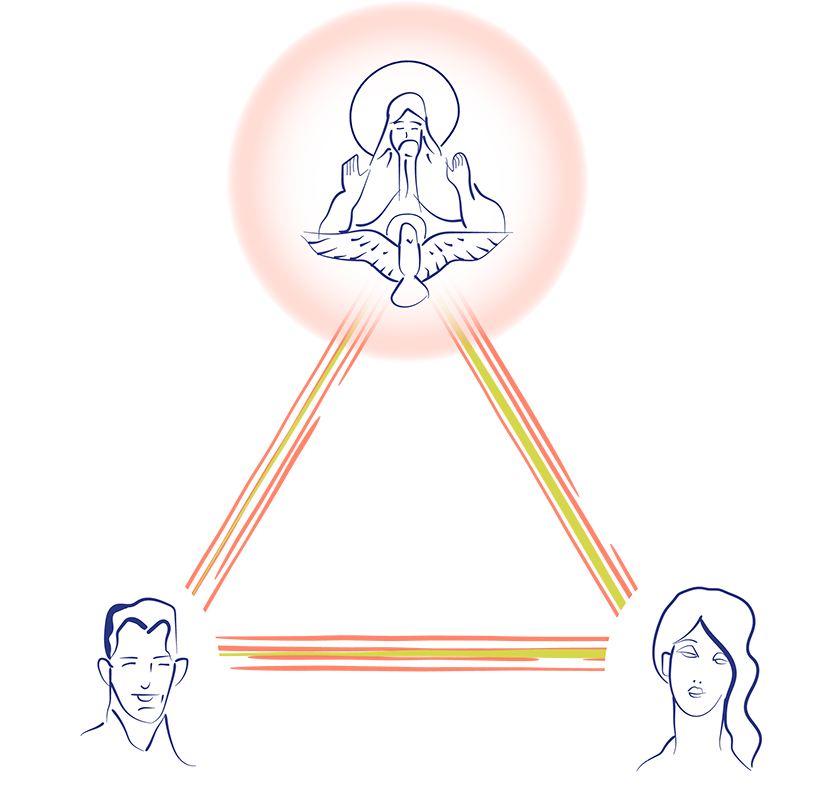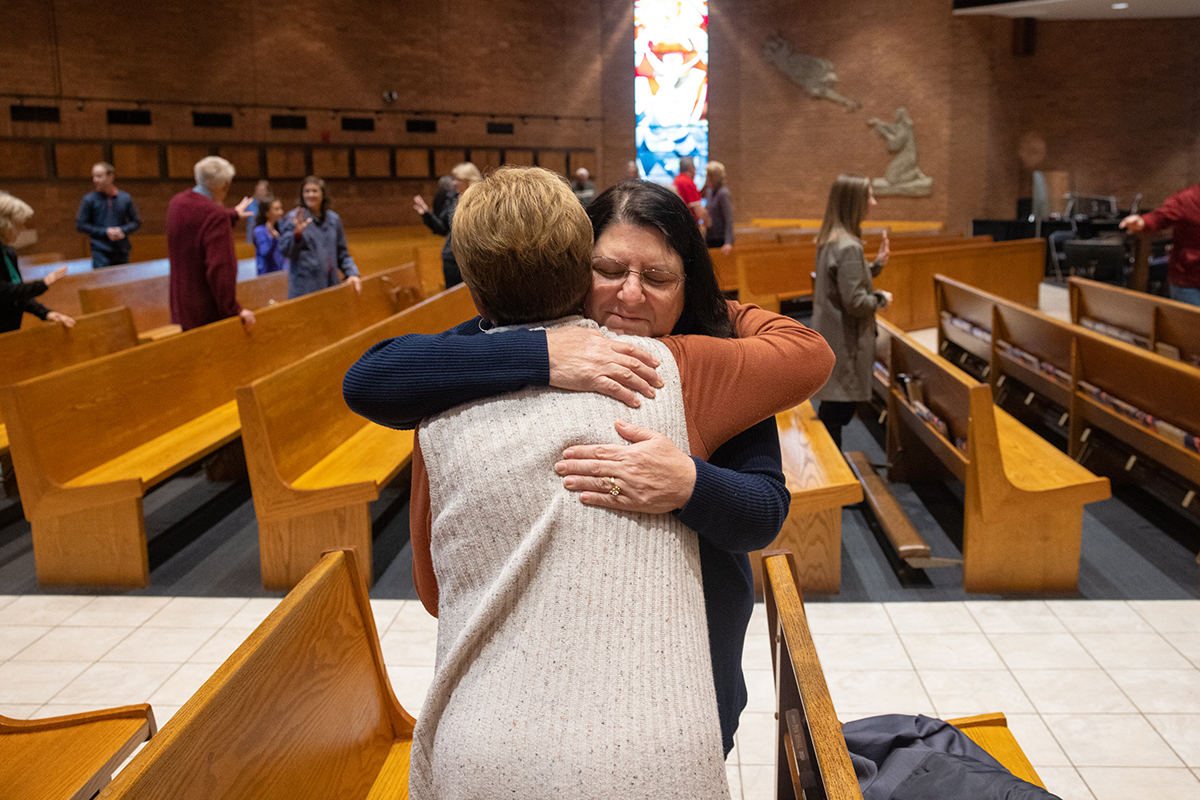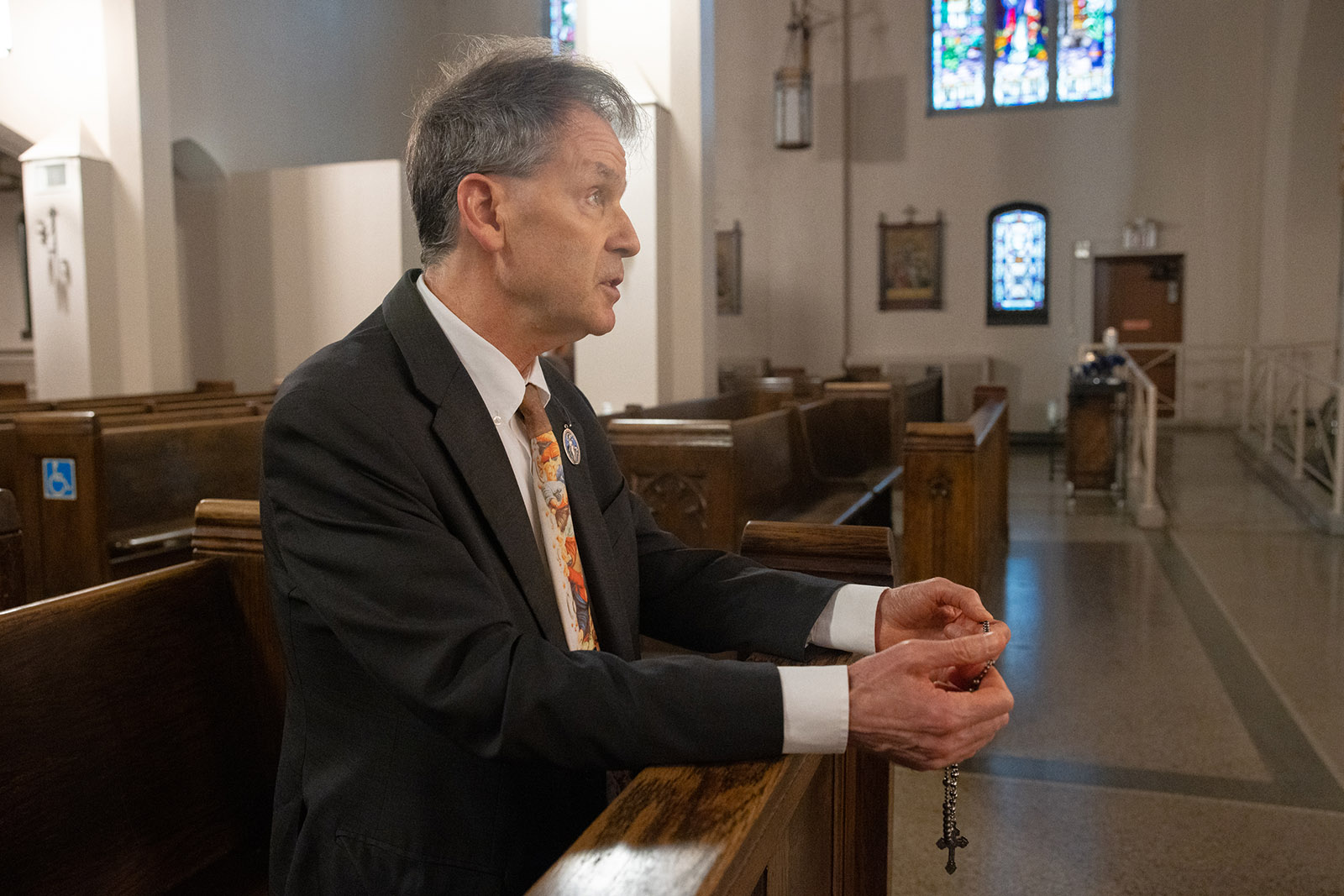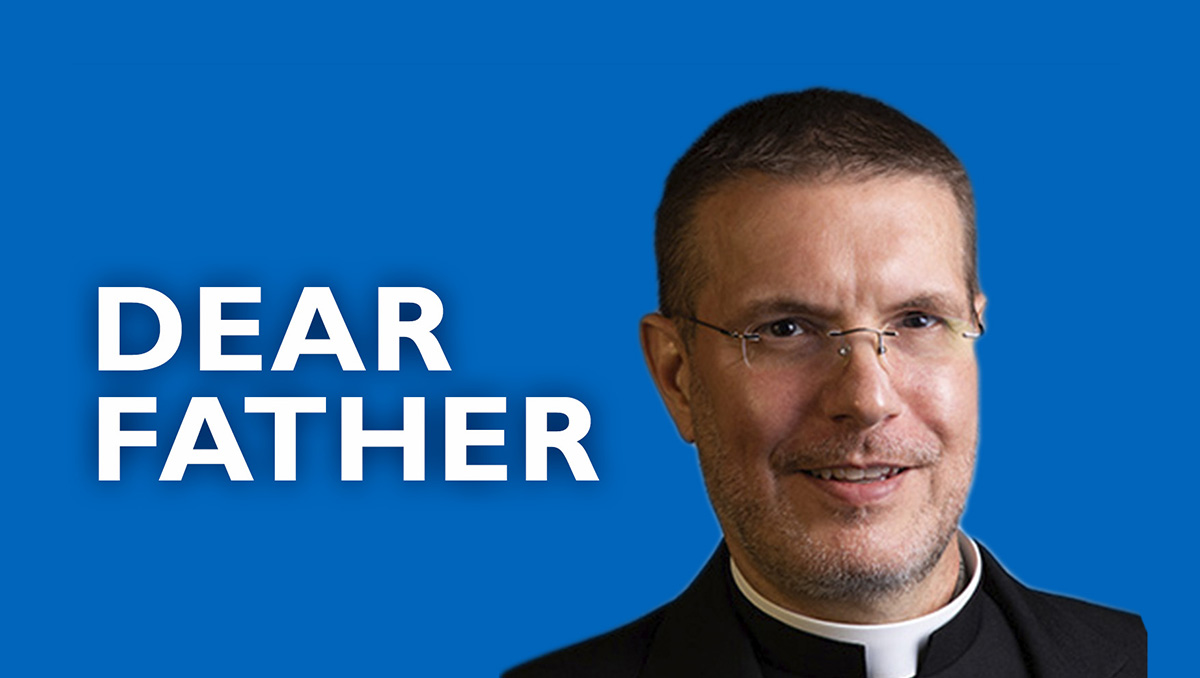Biblical examples from Jesus help us creatively lean into conversations on modern-day moral issues

How can we speak creatively with others about moral issues? Jesus points the way with examples in Sacred Scripture.

Your sister announces she is going to marry another woman. Do you attend the wedding?
If you go, it could give the impression of acceptance. But if you don’t attend, you risk severely damaging the relationship with your sibling. What do you do?
Your 13-year-old child wants to attend a PG-13 movie with his friends. But after reading a description of the movie, you discover that there will be content that might be inappropriate. When is the right time to say yes, and allow him to go? When is the right time to say no, and explain that it’s not consistent with family values? And when is the right time to say no, but agree to watch the movie with him and have a discussion?
To talk about complex moral issues with a framework rooted in faith sometimes takes creativity, said Ed Hogan, academic dean and associate professor of systematic theology at Kenrick-Glennon Seminary. Hogan teaches a course on marriage to seminarians, in which he encourages them to rely on the Holy Spirit in finding “creative space” in talking about what the Church teaches on marriage and related topics.
“We’re discovering as a faith community, how do you lean into these complex issues more creatively?” Hogan said. “What are our legitimate options? What do you do when simply ‘yes’ won’t work, and simply ‘no’ won’t work either?”
Jesus exercised astonishing creativity during His public ministry, Hogan said. There are many examples within Scripture that show times when Jesus knew that simply saying yes or no would not suffice. Hogan stressed that in talking about moral issues, it’s not about looking for “wiggle room” between yes and no, because we’re afraid to stand up for the truth. “We teach seminarians to always be faithful to the Church” he said. “But in talking and dealing with those who aren’t, we need to find the creative space to have a discussion with them.”
The woman caught in adultery
“Jesus went to the Mount of Olives. But early in the morning he arrived again in the temple area, and all the people started coming to him, and he sat down and taught them. Then the scribes and the Pharisees brought a woman who had been caught in adultery and made her stand in the middle. They said to him, ‘Teacher, this woman was caught in the very act of committing adultery. Now in the law, Moses commanded us to stone such women. So what do you say?’ They said this to test him, so that they could have some charge to bring against him. Jesus bent down and began to write on the ground with his finger. But when they continued asking him, he straightened up and said to them, ‘Let the one among you who is without sin be the first to throw a stone at her.’ Again he bent down and wrote on the ground. And in response, they went away one by one, beginning with the elders. So he was left alone with the woman before him. Then Jesus straightened up and said to her, ‘Woman, where are they? Has no one condemned you?’ She replied, ‘No one, sir.’ Then Jesus said, ‘Neither do I condemn you. Go, [and] from now on do not sin any more’” (John 8:1-11).
In this scenario, the scribes and Pharisees are trying to back Jesus into a simple yes or no. But instead, He finds a creative response in the middle, Hogan said. He doesn’t allow her to be stoned, but yet He also doesn’t accept what she has done. “He doesn’t approve of her action, but He never stops loving her,” he said. “Watch how He holds the truth, and keeps the relationship open.”
Should I attend a same-sex wedding?
Hogan shared this story from a friend: A woman approaches her father and announces she is going to marry another woman. Knowing her father’s religious beliefs about marriage, she asks if he will attend the wedding. After some consideration, he tells her he will be there. He tells her, “You know I don’t agree with this, and I don’t think this is good for you. But I will be there to support you,” Hogan said.
The daughter then asks if he will walk her down the aisle. The father says no — because that’s a clear violation of his belief that marriage is reserved for man and woman alone. “I’m not walking away from you, but I am not going to do that,” he told his daughter.
Hogan says this is a good example of the push and pull of two people in a relationship who have differing beliefs. Ultimately the father has a commitment to stay in relationship with his daughter, while upholding his religious beliefs about marriage.
Jesus is the Messiah
When Jesus went into the region of Caesarea Philippi he asked his disciples, ‘Who do people say that the Son of Man is?’ They replied, ‘Some say John the Baptist, others Elijah, still others Jeremiah or one of the prophets.’ He said to them, ‘But who do you say

that I am?’ Simon Peter said in reply, ‘You are the Messiah, the Son of the living God.’ Jesus said to him in reply, ‘Blessed are you, Simon son of Jonah. For flesh and blood has not revealed this to you, but my heavenly Father. And so I say to you, you are Peter, and upon this rock I will build my church, and the gates of the netherworld shall not prevail against it. I will give you the keys to the kingdom of heaven. Whatever you bind on earth shall be bound in heaven; and whatever you loose on earth shall be loosed in heaven.’ Then he strictly ordered his disciples to tell no one that he was the Messiah.”
From that time on, Jesus began to show his disciples that he must go to Jerusalem and suffer greatly from the elders, the chief priests, and the scribes, and be killed and on the third day be raised. Then Peter took him aside and began to rebuke him, ‘God forbid, Lord! No such thing shall ever happen to you.’ He turned and said to Peter, ‘Get behind me, Satan! You are an obstacle to me. You are thinking not as God does, but as human beings do.’” (Matthew 16:13-23).
In this example, Jesus raises the question: Is He the Messiah? He is. But Jesus won’t let the disciples tell anyone He is the Messiah. Why not? Because humans at that time were not ready to hear it, Hogan said. In the Gospel of Matthew, Jesus then goes on to give the first prediction of His Passion. When Peter rebukes this idea, Jesus responds by saying, “Get behind me Satan.” In these examples, Hogan said, Jesus “has to show them what it means and that takes time. Relationships take time, truth and patience.”
My female cousin identifies as a male. Should I go along with how my relative prefers to be identified?
What is a person entitled to in terms of a name and pronouns? The cousin, previously known as Judy, now wishes to be called Jude. Hogan noted that most people have a preference on the name they use, and that’s acceptable. A girl might be called Michelle at home, but goes by Mickey among her friends.
But where do we draw the line? Would she be entitled to pronouns that are based on her own self-definition? Perhaps a creative solution would be to use the woman’s preferred name, but not use male pronouns. And here’s another question to ask: Can a woman just decide that she’s a man? Sometimes this question will stop a person in their tracks, Hogan said. But other times it won’t. If the other person answers, “yes,” then follow up by asking what else is purely subjective? “What else changes just because I think or feel differently about it? And where does that stop?” Hogan asked. This is a good example of where the answer is simply “no.”
Paying taxes to the emperor
“Then the Pharisees went off and plotted how they might entrap Him in speech. They sent their disciples to Him, with the Herodians, saying, ‘Teacher, we know that you are a truthful man and that you teach the way of God in accordance with the truth. And you are not concerned with anyone’s opinion, for you do not regard a person’s status. Tell us, then, what is your opinion: Is it lawful to pay the census tax to Caesar or not?’ Knowing their malice, Jesus said, ‘Why are you testing me, you hypocrites? Show me the coin that pays the census tax.’ Then they handed him the Roman coin. He said to them, ‘Whose image is this and whose inscription?’ They replied, ‘Caesar’s.’ At that he said to them, ‘Then repay to Caesar what belongs to Caesar and to God what belongs to God.’ When they heard this they were amazed, and leaving him they went away” (Mark 12:13-17).
If Jesus simply says “yes,” then the Pharisees will accuse Him of undermining Israel’s identity by cooperating with the occupying Roman power, Hogan said. So that’s not a good option. If Jesus simply says “no,” then they will accuse Him of being a revolutionary and undermining the lawful government. So that’s not a good option, either. In this case Jesus threads the needle and finds the creative space when simply “yes” and simply “no” won’t do.
Life isn’t always straightforward
As Catholics, we find that in many cases the answer to moral issues may be a straightforward “yes” or “no.” In those moments, we should have the courage to say so. But as we know, life isn’t always straightforward. There will be times when a simple “yes” or “no” won’t do. In those times, our faith calls on us to exercise some creativity, just as Jesus did in His life. Being able to interact with others in a relational way, while maintaining the truth of what the Church says, is an exercise that allows us to grow in faith,” said Hogan.
>> The Holy Trinity: A differential principle strategy
“Man became the ‘image and likeness of God’ not only through his own humanity, but also through the communion of persons, which man and woman form right from the very beginning.”
— St. John Paul II, Theology of the Body
When St. John Paul II gave his series of audiences on the theology of the body, he wanted the faithful to understand it from a trinitarian perspective, said Ed Hogan, academic dean and associate professor of systematic theology at Kenrick-Glennon Seminary.
Put simply, the Holy Trinity is a communion of Persons — Father, Son and Holy Spirit — who bring forth life.
Looking at God as a communion of Persons was something that was important to St. John Paul II. The Holy Father saw the need to address the central role of the Trinity in how people view the topics of the creation of man and woman, as well as marriage, Hogan said. As a communion of Persons, God created human beings to participate in heaven and on earth in God’s love. God Himself is an eternal exchange of love, and He created man and woman to share in that exchange.
“To many people, they don’t see what these issues of sexual morality have to do with the central mysteries of the faith,” Hogan said. “What does this have to do with the Trinity, the Eucharist, the Cross? St. John Paul II wanted to help people see how the central mysteries of the faith are exactly at the heart of the matter.”
In teaching a course on marriage to seminarians, Hogan uses something called the differential principle strategy. That is, a principle that makes a difference between what is acceptable and what is not.
Using the Trinity as a model of what marriage should be, we can say that a marriage, a lifelong, exclusive union between one man and one woman that is open to life, is considered acceptable when using this thought strategy. It would reason then that same-sex marriage is not acceptable — because it not only is it not open to life, but it is not unitive.
The issues of pornography, masturbation, divorce and contraception also fail to be unitive and procreative, Hogan noted. Society’s acceptance of these subsequent examples are a big reason why people often don’t want to take a hard look at the topic of same-sex marriage, he said.
In “Gaudium et spes,” St. John Paul II said that “man … is the only creature on earth which God willed for Himself”(#24). Not only did He make him for Himself, but He made them – male and female – “in His image” (Genesis 1:27). God made them human beings.
The Eucharist serves as a model for us. Jesus gives Himself totally, completely and selflessly unto death. For human beings, this translates into valuing the person as God created him or her, and giving one’s self to the other. And as we see in Genesis, the capacity to give life is God’s very first blessing on the man and woman He made in His image: “Be fruitful and multiply” (Genesis 1:29).
Photo Credits: Illustration by Abigail Witte Your sister announces she is going to marry another woman. Do you attend the wedding? If you go, it could give the impression of … Biblical examples from Jesus help us creatively lean into conversations on modern-day moral issues
Subscribe to Read All St. Louis Review Stories
All readers receive 5 stories to read free per month. After that, readers will need to be logged in.
If you are currently receive the St. Louis Review at your home or office, please send your name and address (and subscriber id if you know it) to subscriptions@stlouisreview.com to get your login information.
If you are not currently a subscriber to the St. Louis Review, please contact subscriptions@stlouisreview.com for information on how to subscribe.







